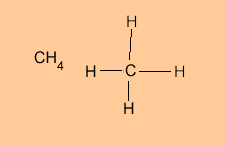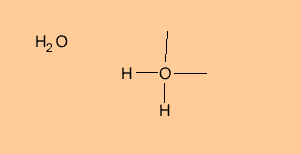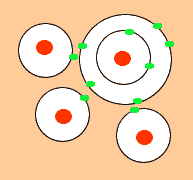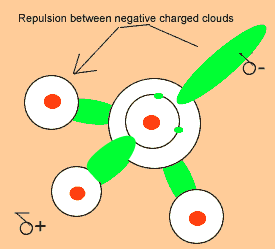


The ammonia molecule showing the bonding and non bonding electrons.


The four charged clouds int he water molecule repel each other as far as possible forming a tetrahedron.
The water molecule takes on
a shape that is dictated by the electrostatic repulsion between the negative
charged clouds. The clouds repel each other as far as possible in 3 dimensions.
The shape of the molecule is taken from where the atoms are. The water
molecule takes on a "V" shape when you consider the positioning
of the two hydrogen atoms relative to the oxygen atom.
The ammonia molecule above takes on the shape of a "Pyramid"
when you consider the position of the 3 hydrogen atoms relative to the
nitrogen atom.